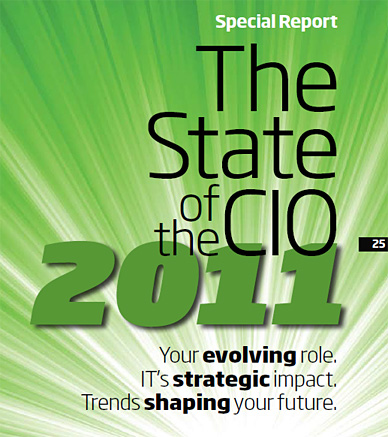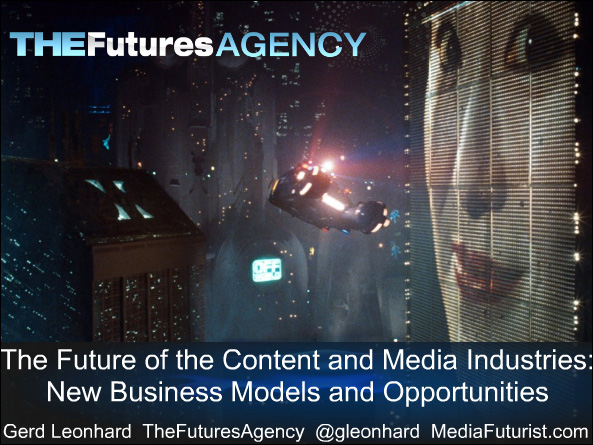A Tale of Two Trends: Augmented Reality and Transmedia Storytelling — from athinklab.com
15 techno-cultural trends for 2011 — from Pamela Rutledge, Director of the Media Psychology Research Center
Time for education innovation— from edReformer.com by Tom Vander Ark (emphasis DSC)
The growth of media and communications technology, the rise of a new generation of students and teachers equipped to use technology, and the shifts within schools and educational systems themselves create new fertile ground for education innovation. Taken all together these major changes can be understood as The Big Shifts in education.
The Big Shifts are comprised of the Technology Shift, the Global Shift, and the Learning Shift.
Some items from Jim Carroll- Futurist, Trends & Innovation Keynote Speaker:
2011 Cloud Computing Predictions For CIO’s And Business Technology Leaders — from Forbes.com by Ray Wang
The Bottom Line: Cloud Adoption Provides A Path To The Next Generation Enterprise
Cloud adoption is inevitable. Business technology leaders will move beyond “try and buy” across the Cloud Stack for seven reasons:
- The cloud has moved from “when” to “how”
- As the economic climate improves, the cloud adoption discussions are moving from cost to value and from tactical to strategic
- Reducing hardware cost, increasing competition amongst vendors, and economies of scale have put the customers in a driver’s seat
- Customers have realized that TCO of software should be a vendor’s problem, and not theirs
- Cloud will deliver the optimization savings to pay for future innovations
- Future innovations will arrive cloud first and maybe never as an option on-premises
- Time to value, ease of use, and good-enough functionality will lead as the primary drivers for SaaS adoption
5 e-book trends that will change the future of publishing — from Mashable’s Business Section by Philip Ruppel
(Philip Ruppel is the President of McGraw-Hill Professional, a leading global publisher of print and electronic content and services for the business, scientific, technical, and medical communities)
1. Enhanced E-Books Are Coming and Will Only Get Better
2. The Device War Is Nearly Over
3. The $9.99 E-Book Won’t Last Forever
4. The Contextual Upsell Will be a Business Model to Watch
5. Publishers Will Be More Important Than Ever
40 for the next 40: A sampling of the drivers of change that will shape our world between now and 2050 — from gerdleonhard.typepad.com and Toffler Associates
From the foreword:
We are in the midst of an accelerating, revolutionary transformation. Change is happening everywhere – in technology, business, government, economics, organizational structures, values and norms – and consequently affects how we live, work and play. As industry and government leaders, we must acknowledge that this change demands new ways of governing and of running our organizations. The ways in which we communicate and interact with each other will be different. The methods through which we gain and process information will be different. The means by which we earn and spend money will be different. Through the culmination of these and other changes, organizations will be radically transformed.
This change is not unexpected. Forty years ago, Alvin and Heidi Toffler recognized that the pace of environmental change was rapidly accelerating and threatened to overwhelm the relatively slow pace of human response. Through Future Shock, the Tofflers persuaded us to consider the future by imagining drivers of change and preparing for a wide range of resulting future environments. Now as we look towards the next 40 years, we continue to use these time tested methodologies, our founders’ legacy to Toffler Associates, for understanding the forces of future change. We focus on the convergence and interdependence of seemingly orthogonal aspects to connect the dots and develop strategies for future success. In this way, we recognize, as the Tofflers did, that preparation is the best defense against the future (emphasis DSC).
Here is a sampling of 40 drivers of change that – we believe – will shape the future.
From DSC:
Includes sections on Politics, Technology, Social, Economics, and the Environment.
eLearning predictions for 2011 and beyond — from Web Courseworks.com by Jon Aleckson
Excerpts:
This summer I attended the 2010 Distance Teaching and Learning Conference in Madison, Wisconsin. Some very interesting topics came up in the facilitated Think Tanks, and I wanted to share some of the predictions that were developed from these active group discussions regarding where eLearning will go in the next ten years.
…
Below you will find a table that summarizes the different opportunities and challenges that were predicted to arise in the next ten years by the participants in the conference Think Tanks and by [Jon Aleckson].
| Opportunities | Challenges | |
| Learner |
|
|
| K-12 Instruction |
|
|
| Corporate Training |
|
|
| Content |
|
|
| Learning Environment |
|
|
| Faculty |
|
|
| Administration & Management |
|
|
| International Perspectives |
|
|
Learning technology trends to watch in 2011 — from The e-Learning Coach
- Growth of Social Learning
- To LMS or Not
- Pocket Video Technology
- Mobile
- iPad or Alt-Tablets
- Virtual Worlds Rising Up
- Augmented Reality
- Blogs
- eBooks
- QR Codes
Six Hot Workplace Trends for 2011 from cio.com by Shane O’Neill
- Digital Portfolios Replacing Resumes <— From DSC: This speaks to the eventual need for digital literacy for all students
- Mobile Is the New Desktop
- Online Work: Hiring in the Cloud
- The HTML5/Flash War: Programmers Needed
- Businesses Will Get Even More Social
- The Death of Traditional Marketing
Where the books used to be — from Thomas Frey, futurist

.
During the coming years, libraries will be faced with a number of options for replacing their current inventory of books with electronic book readers. As some of the early adopter libraries begin to understand the economics and freedoms/restrictions associated with the devices, they will begin to move forward, replacing thousands of volumes on the rack with what will seem like a relatively few e-readers occupying comparatively little space.
future scenario, new strategy, powerful idea, technology trends











